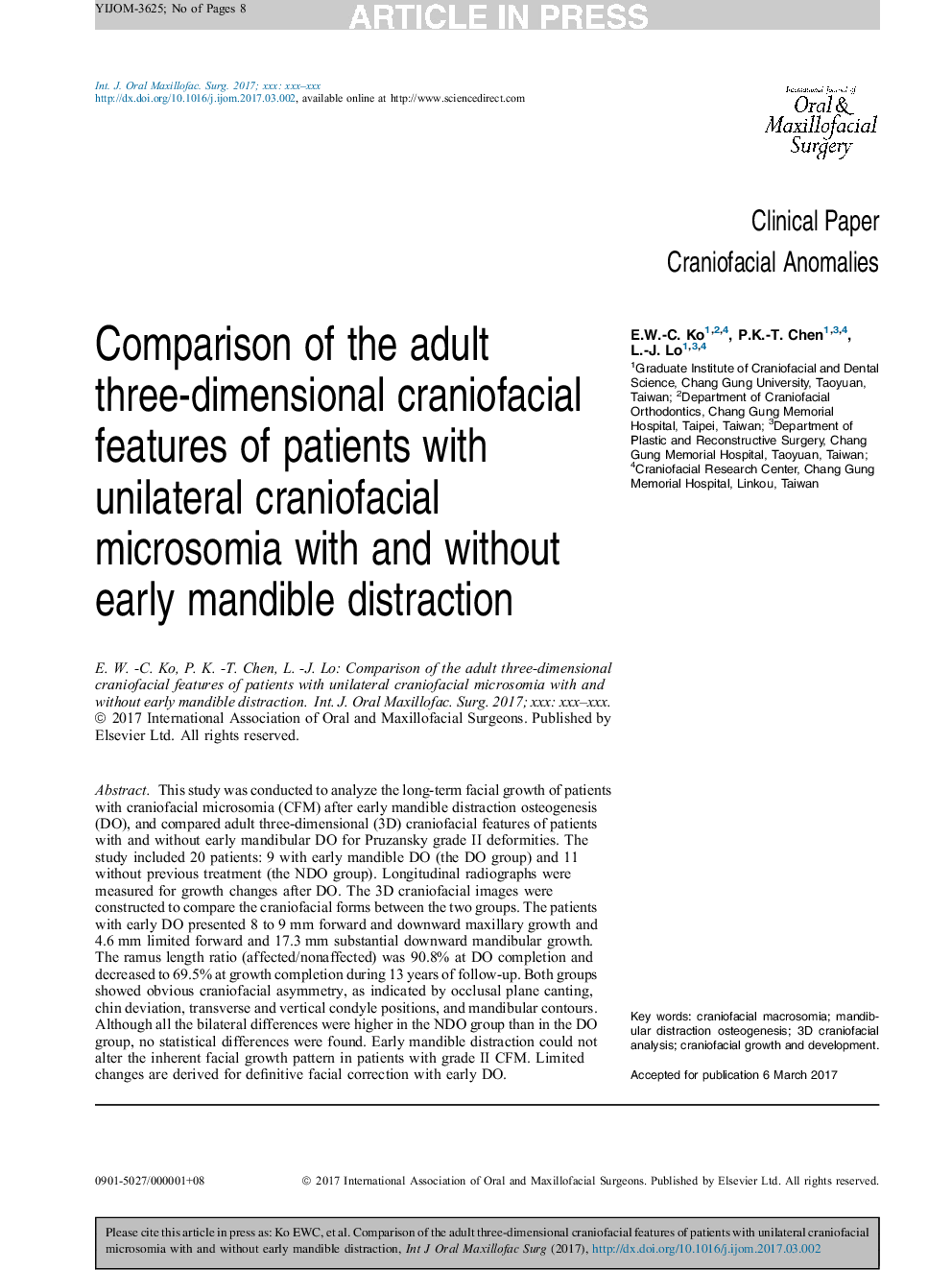| Article ID | Journal | Published Year | Pages | File Type |
|---|---|---|---|---|
| 5638866 | International Journal of Oral and Maxillofacial Surgery | 2017 | 8 Pages |
Abstract
This study was conducted to analyze the long-term facial growth of patients with craniofacial microsomia (CFM) after early mandible distraction osteogenesis (DO), and compared adult three-dimensional (3D) craniofacial features of patients with and without early mandibular DO for Pruzansky grade II deformities. The study included 20 patients: 9 with early mandible DO (the DO group) and 11 without previous treatment (the NDO group). Longitudinal radiographs were measured for growth changes after DO. The 3D craniofacial images were constructed to compare the craniofacial forms between the two groups. The patients with early DO presented 8 to 9Â mm forward and downward maxillary growth and 4.6Â mm limited forward and 17.3Â mm substantial downward mandibular growth. The ramus length ratio (affected/nonaffected) was 90.8% at DO completion and decreased to 69.5% at growth completion during 13 years of follow-up. Both groups showed obvious craniofacial asymmetry, as indicated by occlusal plane canting, chin deviation, transverse and vertical condyle positions, and mandibular contours. Although all the bilateral differences were higher in the NDO group than in the DO group, no statistical differences were found. Early mandible distraction could not alter the inherent facial growth pattern in patients with grade II CFM. Limited changes are derived for definitive facial correction with early DO.
Keywords
Related Topics
Health Sciences
Medicine and Dentistry
Dentistry, Oral Surgery and Medicine
Authors
E.W.-C. Ko, P.K.-T. Chen, L.-J. Lo,
